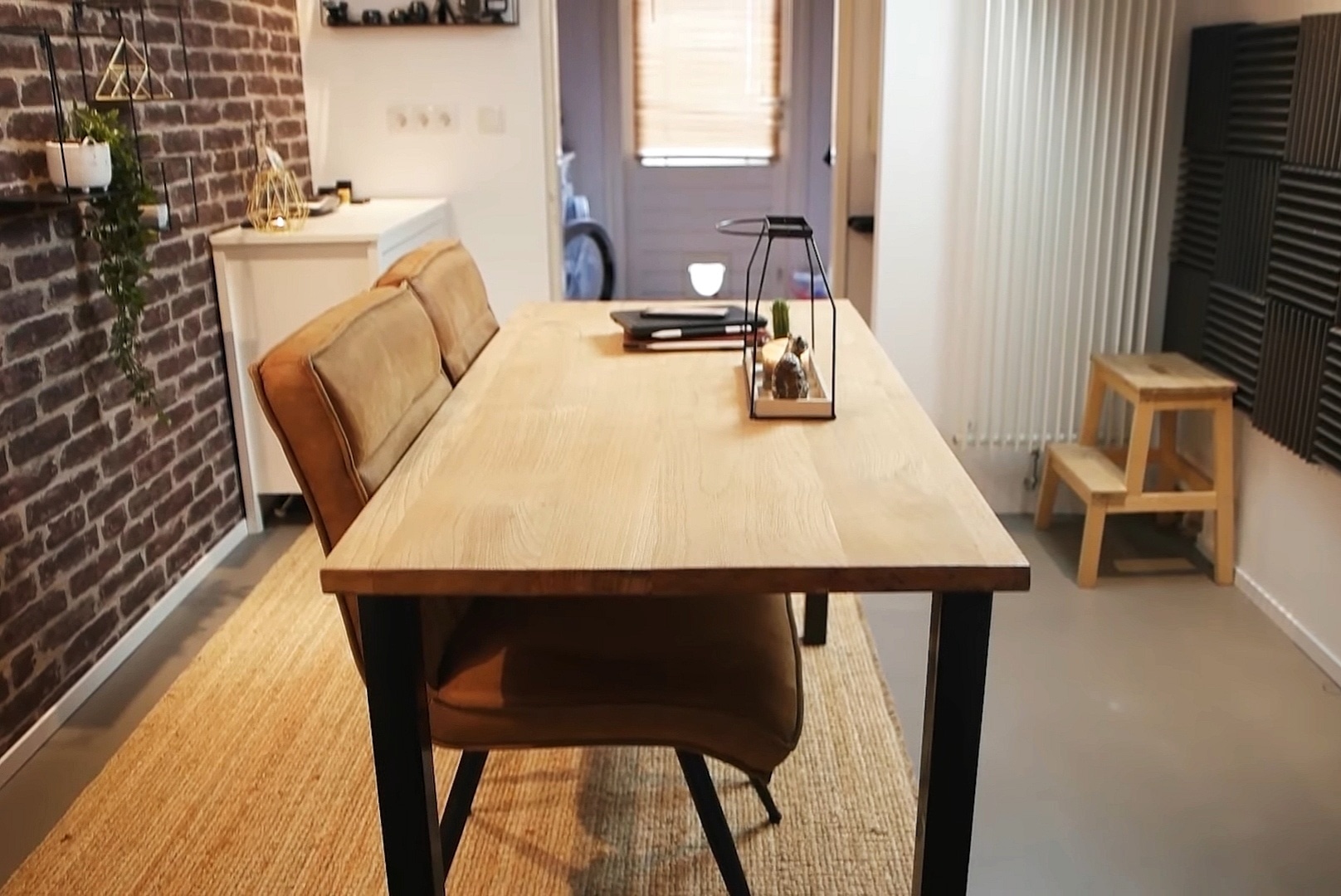
CreaChick and CreaRick, known from Youtube, took up the challenge and created a super nice epoxy floor in their studio. There was a lot involved, as tiles also had to be removed and the floor had to be made completely smooth. In this article, you can read about the steps they took for a perfectly satin-smooth finished epoxy floor. This type of floor is also beautiful in, for example, living rooms, kitchens, bedrooms or bathrooms.
Not sure how much material you need for your floor? Our customer service will be happy to help you determine what you need. You can also request for a quote at the bottom of this page.
First of all, you need to clear the floor completely so that you can easily reach everything. After the floor is completely empty, remove the tiles with a chisel. Try to remove as many tiles and glue residues as possible. This will save you a lot of leveling epoxy that you will need later on. So take your time here.
After all obstacles have been removed, clean the floor thoroughly and vacuum the floor 2 times to make sure you have had everything as dust greatly reduces adhesion.
Now that the floor is completely clean, you can start mixing the epoxy floor primer. CreaChick's floor is a rough concrete floor so that's why we chose epoxy floor primer for dry substrates. Unsure which type of primer you need? Then contact our customer service team.
Mixing is easy. Add the hardener of the floor primer to the base in the can. Pour the bottle or can completely empty. Mix well using a spiral mixer on a low-speed drill. Mix for at least 3 minutes, scraping well along the bottom and edges of the can.
After mixing, pour the primer directly over the floor and spread the primer with a floor squeegee. Roll the primer crosswise with a wide fleece roller. Let the floor primer cure for at least 24 hours before proceeding to the next step.
24 hours after the primer has cured, you can work on leveling the floor. Leveling epoxy will fill all seams and cracks so it is important to protect areas where you don't want the epoxy to go, such as near a door.
leveling, later gives the floor a sleek and smooth finish. Especially for living areas, this is definitely recommended. Once the right preparations have been made, you can start preparing a leveling mix. Use a large mortar tub for this. You can use this several times in a row. Make 1 set completely each time.
Pour the epoxy base and hardener into a mortar tub and mix both components well using a spiral mixer on a drill. Then carefully add leveling powder. We recommend doing this in pairs. One person mixes and the other pours the powder into the mortar tub.
Once the leveling compound is a nice even homogeneous mass and well mixed, it should be poured immediately. Spread the leveling with a smoothing trowel or for large areas (> 50m2) with a squeegee. If you need to level/raise a lot, it is also advisable to air the leveling compound with a spiked roller immediately after application.
After the leveling compound is applied and cured (in about 24 hours), applying epoxy floor coating can be started. Epoxy floor coating consists of 3 components: a can of base, pigment paste and a bottle or jerry can of hardener. These components must be mixed well.
First add the package of hardener by pouring it into the can. Add everything and empty the can or bottle as much as possible. Then add the pigment. You can use a spiral mixer to scrape the tin as empty as possible. Then mix all 3 components well for about 3 minutes. Scrape well along the bottom and edges of the tin. This will prevent any unmixed residue from getting into the floor.
When the floor coating has a nice homogeneous mass, the floor coating can be poured directly over the floor. Pour the floor coating along the edges and finish the edges immediately with a flat brush. Then spread the floor coating with a floor wiper and roll crosswise with a wide coat roller. If necessary, make a new mixture of floor coating and repeat until the entire floor is finished.
To give the floor a beautiful matt coating, it is usually finished with a matt-gloss coating for epoxy floors. It is important to let the floor cure for at least 48 to 72 hours first. This way, it will be sufficiently hard to be sanded.
First, sand the floor with a rotary floor sander. Use grit P180 or P240. Sanding the floor ensures good adhesion of the silk gloss PU coating. After sanding, clean the floor thoroughly. First vacuum and then clean with ammonia diluted with water.
Then you can start preparing the silk gloss coating. Add the base and hardener in a bucket. Mix both components well with a spiral mixer on a drill. Do this at a low speed. Then pour a small amount of coating into a paint bucket. Do this with a strainer in between so that any lumps that may be in PU coating do not end up in the final result.
Next, roll the coating onto the floor with a wide velour roller. Do this in a thin layer to avoid gloss differences. Work in a structured way to make sure you don't skip anything. Pour new coating into the paint tray from time to time.
The floor is already walkable after 24 hours. After 5 to 7 days, the floor is completely cured and can be subjected to heavier loads.
Request a tailor-made step-by-step plan now! As soon as we have received the information below, we will tell you exactly what you need. Then you can immediately start laying the perfect floor.
Here you can find all 18 related articles on this topic. Mis je informatie om aan de slag te gaan met jouw klus? Neem dan contact met ons op.
Do you have a specific question? Call one of our specialists for free advice +3185 0220090

